Idaho Beginner Pistol Class: Introduction to Pistol Safety, Operations, Shooting, and Maintenance
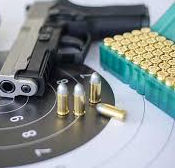
Idaho Beginner Pistol Class 101 introduces the most basic concepts of owning a pistol to the beginner student. This beginner pistol class introduces the new pistol student to understanding the bare essentials of pistol ownership. Safety is the primary focus of this class, along with being a responsible gun owner who secures their firearm when not in use.
The course also allows students to move to the Idaho Pistol Essentials Class 102: Shooting with Confidence! A must-have skill-builder class for those who are serious about their shooting abilities.
This class satisfies the minimum requirements for the Idaho Concealed Carry Standard License for those not interested in the many benefits they will receive attending the Idaho Enhanced Concealed Carry Class.
“If its not on your person,
Its in a safe.”
Level 1 Firearms Training LLC
Types of Firearms Actions
Training starts with understanding the three common firearms available, their actions (how they behave), and how to load, shoot and maintain their firearms for a lifetime of enjoyment.
The Double-Action Revolver
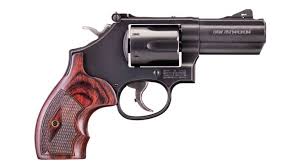
Pictured to the left is a Smith & Wesson Double-Action revolver. Many (not all) double-action revolvers have very short barrels which make them easily concealed.
Double-action revolvers were very popular in the mid to late 90s across many police agencies. The popular thought that a revolver never fails still holds true to this day. Revolvers are among the simplest of firearm designs.
Double-action revolvers perform two actions – they cock the drop the hammer while the cylinder moves into cartridges into their proper position. Unlike the single-action revolver, the double-action revolver performs all the cocking and shooting processes necessary to fire the gun. Most double-action revolvers can also have their hammers cocked manually into the firing position, placing the trigger into a single-action mode.
See our training calendar for times and locations near you.
Loading, Cocking, Shooting, Decocking, and Unloading a Firearm
Processes involved when preparing, shooting, and emptying a firearm. You must perform at least five different actions at any given time. We will work with you individually to ensure you understand all the processes involved before you go to the range. As a general overview, here is a description of the steps:
Loading
Loading is the placing of cartridges into the chamber(s) before shooting. This involves placing cartridges into each revolver’s chambers for revolvers. For semi-automatic pistols, this involves placing cartridges into a magazine, inserting the magazine into the firearm, and preparing the firearm for shooting. In doing so, a cartridge is placed into the chamber; the gun is ready.
Cocking
Cocking is preparing the gun to shoot. For single-action revolvers, the hammer is pulled back before shooting. For double-action revolvers, you press the trigger until the hammer drops. You pull the slide and release one into the chamber for semi-automatic pistols.
Shooting
The process of shooting a firearm is relatively the same for all revolvers and pistols. At the press of the trigger, the hammer drops and the bullet is discharged from the firearm.
Decocking
You can relate decocking to the opposite of cocking your firearm. When you decock, the firearm is essentially placed into a state where it cannot fire. There are several ways of decocking depending on your firearm, which will be discussed in class.
Unloading
Unloading brings us full circle to the beginning when loading a firearm. In this case, we reverse the loading process by removing cartridges from the revolver chambers and the magazines and placing the ammunition in a locked and secure safe for the next time we plan to have some fun at the range.
Ammunition Fundamentals
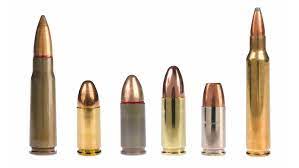
Ammunition is not overly complicated for the average user, especially when considering options for target practice.
Self-defense ammunition can get a little more complicated, but it’s very straightforward once you understand the basics. We discuss ammunition options in-depth during the Idaho Pistol Essentials course.
Ammunition Essentials
9 mm Luger – aka – Parabellum 9×19
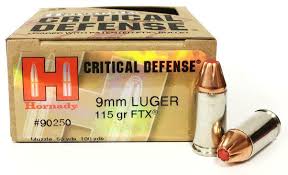
The 9 mm Luger, also known as the Parabellum 9×19 came about in 1902 for the very popular Luger pistol. The 9 mm caliber is very a very popular choice for self-defense firearms. Its size allows for the maximum amount of ammunition that can be packed into a pistol magazine.
Fun Fact: Parabellum means “Prepare for War” and is the most popular caliber used by the U.S. military and our NATO allies.
See our training calendar for times and locations near you.
The Five Fundaments of Pistol Shooting
Essential to beginner pistol shooters is a solid foundation. “The Five Fundamentals of Shooting”. Mastering the five fundamentals of pistol shooting is core to effective shooting skills
By leveraging our unique nationwide training experience, incorporating Modern Gun Training Techniques, and working closely with beginner pistol shooters, Level 1 Firearms Training LLC will have new pistol shooters shooting accurately in no time.
Pistol Essentials 102: Follow-Through
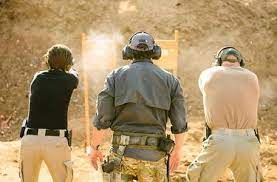
Follow-Through is simply the process of repeating the same actions over again once you have fired your shot. In other words, your fundamental shooting basics: Aiming, Breath Control, Hold Control, and Trigger Control must return to their same basic starting points after you have fired your shot.
If you do not return to these fundamentals after shooting, there is no follow-through. Without a proper follow-through, your next shot will likely miss it intended landing spot on the target.
Pistol Care and Maintenance
Rounding out our Pistol Essentials 101 Class is a lesson in caring for and maintaining your pistol for a lifetime of enjoyment. There are many types of revolvers and semi-automatic pistols available. Firearms must be cleaned and oiled regularly to maintain top performance. A gun cleaning kit consists of:
- Cloth Patches
- Cleaning Rods and Attachments
- Bore Brush
- Bore Tips for Patches
- Small Brush
- Gun Cleaner and Oil – Some cleaning options include an all-in-one approach
- Soft Cloth
No matter how often you shoot or don’t shoot, it’s important to establish a cleaning routine for your firearm.
You must clean, oil, and maintain your firearm at least once a month. Remember, firearms are mechanical devices – they can fail. Maintaining your firearm will ensure it will not fail when you need it.
Optics fail if not cleaned and kept in good working order, including batteries in optics that may need to be changed. Ensuring your firearm is cleaned, oiled, and properly maintained, should extend its lifetime significantly.
This Is A Two Day Class!
Why is this a 2-day class? Our Idaho Beginner Pistol Essentials 101 Class is the best training you will receive in Idaho, there are no shortcuts in learning how to properly own and use a pistol.
We train using Modern Gun Training Techniques which all but ensures you will know everything you need to know by the end of class. We want you to be completely trained when handling a firearm.
Indoor ranges in Idaho do not accommodate outside instructors which makes no sense – we are literally bringing them, customers! We have chosen to utilize one of the several outdoor ranges in the Treasure Valley that like us bringing them, customers. Indoor ranges are loud, really loud. You cannot hear the instructor while training and are extremely restrictive with what we can teach.
Outdoor ranges provide freedom of teaching without the loud distraction you experience when training in an indoor range. We can take our time training – there’s no rush – you’re not paying a lot of money per hour, students can hear us, there are little to no distractions, and there’s no need to rush you through the skill-building portion of class. You learn in a safe, comfortable, and fairly quiet environment.
Outdoor ranges are extremely hot or cold in the late afternoons which distracts new students from concentrating. By shooting early the the following day, students are fresh and ready to train for their new shooting skills.
Prerequisites:
- NONE. This is a beginner pistol class.
Adherence to the primary safety rules must always be followed.
- Keep the Firearm Pointed in a Safe Direction.
- Keep the Firearm Unloaded Until Ready to Use.
- Keep Your Finger Off The Trigger Until Ready to Shoot.
- Know Your Target and Beyond.
- No Drugs, Alcohol, nor Cannabis are Allowed At The Range.
Equipment:
Day 1: Classroom – Saturday
- Notepads, pens, paper.
- A personal pistol of any caliber, cased, secured, and free of ammunition.
If you do not own a pistol, we recommend taking this course before purchasing one. Pistol rentals are available, including ammunition, during check-out.
- Pistol Case: Preferably lockable for transportation to the class and range.
- Training Cartridges (Dummy Rounds): At least 5 Training Cartridges in the correct caliber are needed for this class.
- Can be found at local sporting goods stores or online.
- Suitable Eye Protection. This can be wraparound eyewear, polycarbonate lenses, or non-shattering prescription glasses.
- Suitable Ear Protection. We recommend electronic noise-canceling earmuffs, but earplugs are acceptable.
- Suitable Gun Cleaning Kit: Appropriate cleaner, oil, patches, and rods as needed. We recommend purchasing a pre-made pistol cleaning kit that accommodates different calibers.
- Snake bore cleaning kits are permissible.
- Length: 6 Hours
Day 2: Range Day – Sunday
What to Bring:
- Quality Pistol Revolver or Semi-automatic handgun. Must be in good operating condition for the class.
- Pistol Case: Preferably lockable for transportation to the class and range.
- Beverages for Hydration.
- Suitable Eye Protection. This can be wraparound eyewear, polycarbonate lenses, or non-shattering prescription glasses.
- Suitable Ear Protection. We recommend electronic noise-canceling earmuffs, but earplugs are acceptable.
- Wear appropriate clothing for the weather.
- Bug Spray for the critters.
- No V-neck or similar shirts.
- No open-toe shoes
- Sunscreen or jackets when needed.
- Bring snacks for breaks. Snacks – Are allowed at the range – snacks are not allowed on the firing line.
- Suitable Gun Cleaning Kit: Appropriate cleaner, oil, patches, and rods as needed. We recommend purchasing a pre-made pistol cleaning kit that accommodates different calibers.
- Snake bore cleaning kits are permissible.
- 150 Rounds of Quality, store-bought ammunition (no tracers, steel, or reloads allowed – ammunition to remain in your vehicle at all times).
Optional but highly recommended:
- Small Personal Canopy during the summer season when temperatures are expected to be high.
- Folding chair and a small folding table to create your workstation (bench).
- Estimated Length: 4 Hours.
NO LIVE AMMUNITION IN THE CLASSROOM
Safety First
Safety is always the primary concern when handling and storing a firearm. Depending on the circumstances, these two topics are mutually vital for the responsible Idaho gun owner to follow.
The following gun rules must always be followed:
- Keep the Firearm Pointed in a Safe Direction at all times. Some training academies will state the number one rule is always to treat the gun as if it is loaded. Pointing the gun in a safe direction means you are treating it as if it is loaded.
- Always Keep the Firearm Unloaded. Your firearm does not need to be loaded if it is not in use. It is best practice to keep your ammunition stored in a separate safe away from your firearm, so the two are never accessible simultaneously. There are times when the firearm should be loaded, such as carrying for personal protection.
- Keep Your Finger Off the trigger. Modern firearms, even older ones, will not discharge a bullet unless the firearm is prepared for firing and the trigger is pressed. By keeping your finger up high on the frame while handling a firearm, there is no chance the firearm will discharge by itself.
- Know Your Target and Beyond: Whether you are at an indoor or outdoor range, it is very important to know what’s behind your target. Bullets can travel over a mile, others even more. It is your responsibility where that bullet impacts no matter the situation. Be sure your bullet will not hit an innocent person or someone’s property.
Keep Idaho Firearms Secure At All Times
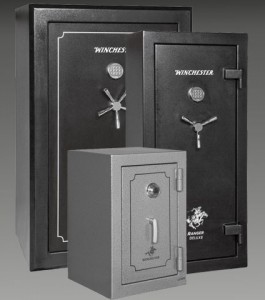
You hear it all the time; you see it in the NEWS almost every day – a mass shooting occurs. Blame the guns, take them away; it’s for everyone’s safety.
The truth is, if we allow the government to take away our guns, then only criminals will be armed. It is every gun owner’s responsibility to keep their guns secure.
We must demonstrate a reasonable, responsible, and common sense approach to securing our firearms from theft and being used in a crime. This means we must keep them in a safe, locked, and secured location at all times.
Benefits of Continued Training
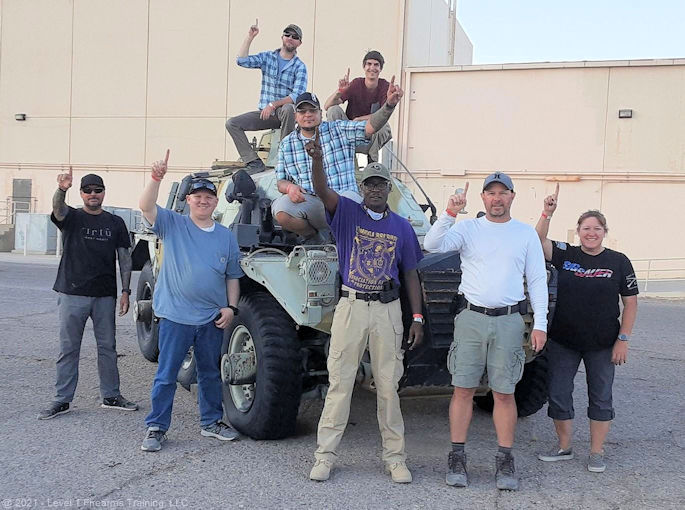
Learning to use your firearm safely and properly in Idaho is very important. Understanding the fundamentals of shooting, how to load, cock, decock, and properly store a firearm is essential for every gun owner.
We invite you to come back and join us for our next Idaho Pistol Essentials 102 Class – Shooting with Confidence class to build on the skills you learned in today’s class.
